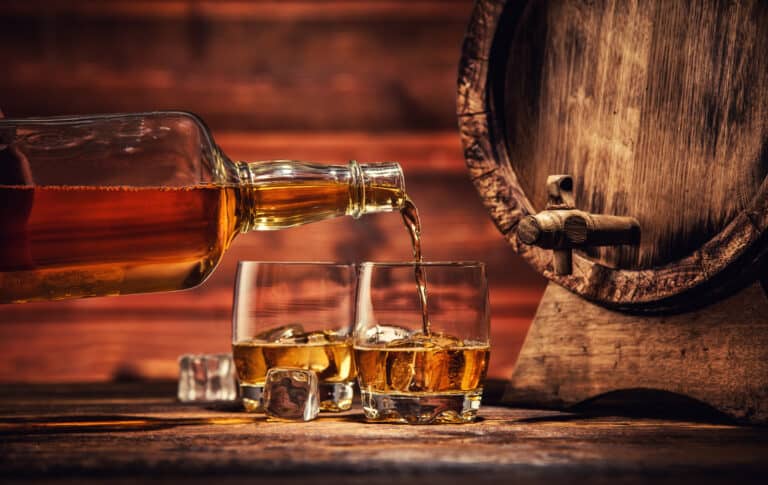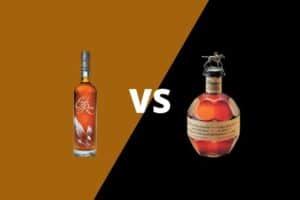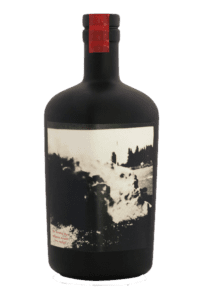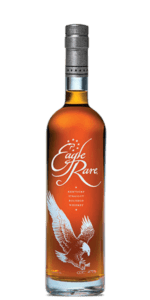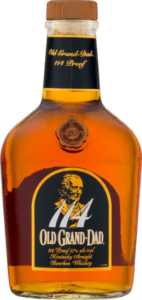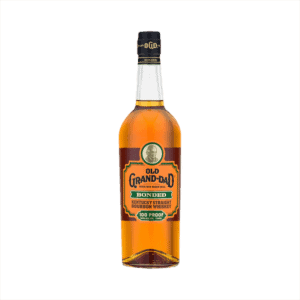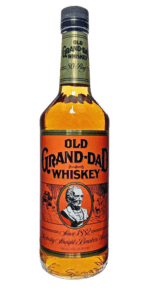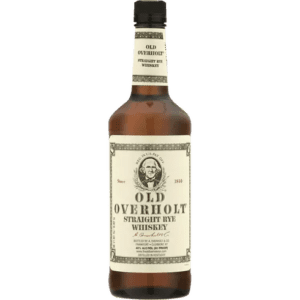Whiskey is a beverage that has been passed down and enjoyed throughout the ages and one that has undoubtedly stood the test of time. Whisky drinkers have been known to swear by their favorite year, distillery, or region. Sometimes, those factors can make a specific variety of whisky quite pricey. From collectors to casual drinkers, whisky is one of the most beloved beverages on the face of the planet.
Everyone enjoys an excellent whiskey glass, but few truly know enough about the spirit to tell the difference from one glass to another. While most great whiskey is quite expensive, learning the ins and outs of whiskey will help you make a more informed decision the next time you belly up to the bar.
Table of Contents
What Is Whiskey?
Whisky is a distilled beverage that is generally enjoyed in Ireland, Scotland, and the United States but is also loved the world over. While whiskeys can vary in ingredients and production, the basic overall process for producing a high-quality whisky is the same.
Whisky is produced by fermenting several grain mashes, aging them, and then distilling the mash to extract the alcohol. Depending on the variety of whisky in question, several types of grains can be used in the mash. The most common of these grains are corn, barley, rye, and wheat. In most variations, the whisky goes through an aging process in a wooden cask, which is generally made from oak or charred white oak.
Is it Whisky or Whiskey?
The term “Whiskey” comes from the Gaelic term usquebaugh, which loosely translates to the phrase “water of life.” It is a term that has been adopted to describe many different spirits over time.
In modern times, you will often see two different spellings. They refer to the same variety of spirits but from different origins. The spelling “whisky” refers to a spirit that has been distilled in Scotland, while “whiskey” is from Ireland.
Composition of Whiskey
Whiskey is a complex spirit that can be made using many different ingredients. Bourbon whiskey is made from at least a 51% corn mash base using a charred oak barrel. Corn whiskey is created from a mash consisting of 80% corn, and it is generally not aged. If a corn whiskey is aged, it is aged using barrels without char. Lastly, malt whiskey is prepared with a mash that is made up of at least 51% malted barley
As a process, the production of whiskey is long but relatively simple. It starts with corn or barley base, which is soaked in a vat of water and dried. The drying method can have a considerable impact on the end result and the composition of the whiskey. In the case of Scottish whiskies, they are usually dried using an aromatic peat fire. The dried barley is then milled or ground and made into a mash. Mashing the ingredients allows the starch to be broken down and converts the barley into sugars. This sugary liquid is called wort and is then distilled to make the final whiskey product.
Different Types of Whiskey
In addition to regional spellings, many regional whiskies are quite popular worldwide. These regional spirits bring their own unique distillation methods and taste profiles to the process and provide every label life of their own.
Irish Whiskey
Irish whiskey is a variety of whiskey that is produced exclusively on the isle of Ireland. At one point in time, Irish whiskey was the most popular variety of spirits in the world. However, due to an extensively damaged industry in the late 19th century, Irish whiskey’s popularity has experienced a slight decline. In fact, during the whiskey boom of the 1890s, Ireland boasted an astounding 28 distilleries. By 1972, that number had fallen two a mere two distilleries purchased by a single company, Irish Distillers.
In the long history of spirits, Irish whiskey was one of Europe’s oldest and earliest distilled beverages. Many believe that Irish monks brought back the technique of perfume distillation from their travels in Mediterranean countries.
The Irish whiskey that we know today is famous for a smooth finish instead of the earthy overtones present in Scottish whiskey. The smooth and satisfactory finish of a decent Irish whiskey has made it famous the world over.
[RELATED: Irish Whiskey vs Bourbon]
Canadian Whisky
Most popular Canadian whiskies are actually a blend of multi-grain liquors. They contain a sizeable percentage of corn mash spirits. Due to the hefty portion of corn, these whiskies are typically lighter. They have a smoother finish than other styles of whiskey. Canadians began this smooth tradition by including small amounts of flavorful rye grains in the mash. This whiskey became effectively known as a rye-flavored whiskey, or simply “rye” as it is more commonly known, but used interchangeably.
Japanese Whisky
Whisky production began in the year 1870 but was not produced commercially until the year 1924, when the country opened the doors of the Yamazaki distillery. Since that period, Japanese whisky has become famous for its production quality and its hefty price tag. Japanese whisky is often compared to scotch whiskey for its complex flavor profiles.
In modern times, the most famous breweries in japan are Nikka and Suntory. Both of these distilleries produce single malt whiskies, as well as blended malt varieties.
One of the reasons Japanese whisky became so popular is the conscious effort to recreate a scotch style spirit. However, one of the main differences between a Japanese distillery and a Scottish one is that Japanese whisky companies are vertically integrated. That means that they own both the distilleries and the brands, and they do not trade their single malts with each other. That means that a blended whiskey in Japan will only contain a variety from one of that company’s different malts.
Scotch whisky
Initially, all varieties of Scotch whisky were produced from malted barley. However, during the late 18th century, many distilleries began experimenting with the introduction of wheat and rye ingredients. While percentages may vary, the minimum bottling strength for a Scotch is 40%.
It is a requirement for all Scotch varieties to be aged in an oak barrel for a minimum of three years. The distillery must state that age statement on each bottle, which will reflect the youngest whiskey used to make that product. A whisky with no age statement is called a “NAS” whisky and only guarantees that each whisky contained in the bottle is a minimum of 3 years old. Scotch whisky is also divided into five distinct categories:
- Single malt whisky is a variation that has only been distilled at a single distillery and must have been produced using a mash of malted barley and a pot still.
- Single grain whisky takes the process of a single malt a step further. In addition to only being distilled at a single distillery, a single grain variation can include whole grains and unmalted cereals in addition to the water and malted barley mixture. The “single” in the name does not imply using just one grain. Rather it signifies that the spirit was produced at a single distillery.
- Blended whisky contains a blend of one or more single grain scotch whiskies with one or more single malt scotch whiskies.
- Blended malt whisky refers to a blend of at least two different single malt scotches produced in separate distilleries.
- Blended grain whisky refers to a variation of at least two single grain scotches produced in different distilleries.
[RELATED: Scotch vs Bourbon]
American whiskey
American whiskey is a variety of spirits that are produced using a variety of mashes of cereal grains. There are many American whiskey varieties (rye, rye malt, malt, wheat, corn, and Bourbon); however, all of these different types are made of at least 51% of the grains named on the label.
There are also a number of grain whiskeys, blended whiskeys, and spirit whiskeys that do not specify any specific or dominant grain. American blended whiskeys can also legally contain artificial flavorings or colorings under current regulations.
The most common variety of exported whiskeys are Bourbon and Tennessee whiskey, which are branded as indigenous products, produced in the United States. However, for American whisky to be sold in other countries, it must adhere to that country’s liquor rules. Frequently, this means stricter laws than those produced for sale in the US. The most common types of American whisky are as follows:
- Bourbon whiskey is made from a mash that includes at least 51% corn, otherwise known as maize.
- Corn whiskey is an exceptionally strong spirit that contains at least 80% corn.
- Malt whisky is produced from a mash that includes at least 51% of malted barley.
- Rye whiskey is produced from a mash consisting of at least 51% percent rye.
- Wheat whiskey is produced from a mash that must contain at least 51% wheat.
[RELATED: Rye whiskey vs Bourbon]
Flavor of Whiskey
Starting points and accentuations are essential to the overall flavoring of the whisky. They tend to take part mostly in the fermentation and distillation processes of the spirits.
The differences in flavors that are introduced during the fermentation process should come as no surprise, given that single malt whisky uses a small-batch pot distilling method and grain whisky using a continuous distillation method. The copper pot stills that the whisky is stored in and the production methods used in the distillation process are crucial to imparting the various flavor notes and elements to any whiskey variety.
The fermentation process is the point at which many of the vital flavor compounds are established and persist from this point into the final version of the spirit. The chemical process is quite intricate; however, it should be said that this is the point at which many of a whisky’s “fruity” notes enter the equation.
With that in mind, one of the most significant contributors to the overall flavor of a batch of whisky is the aging process that takes place in a wooden barrel. If you were to skip the barrel aging process, what you would end up with would just be considered moonshine. Most experts estimate that around 50-80% of a whisky’s flavor comes from the process of barrel aging.
While this estimate might sound a little high, considering all of the other intense flavors in a whisky mash, that estimate is likely referencing all of the leading flavor components that are present in a whiskey’s final form. While barrel aging might be responsible for most of the overall flavor, the most remarkable diversity in taste occurs in the fermentation step itself. However, many drinkers notice the massive bulk of wood flavorings upon the first sip.
A simple way to think about barrel flavoring is that this is the step that creates the whiskey’s overall flavor profile. The fermentation and distillation processes are responsible for many of the subtle flavors present to differentiate one whisky from another.
Flavor From Treating the Malt
Whiskies, much like other distilled beverages, are quite complex and generally contain a wide range of flavoring compounds. In fact, upon chemical analysis, 200 to 300 different compounds are detected with ease. There are various acids, alcohols, tannins, and terpenes that lend themselves to the flavor of the whisky. However, if left untreated, these flavors might take over other notes that should be allowed to shine through. That is why many whiskies use several different treatment methods to balance the batch’s flavor.
By treating the malt, these flavors can be balanced and controlled to give a more full-bodied taste. In order to achieve that smoky taste that Scotch drinkers are looking for, most distilleries will actually treat the malt by using the smoke from peat moss. It sounds simple enough, but this process gives the grains incredible bodies of flavor.
Flavor From Distillation
As previously mentioned, the majority of the whisky’s flavors are imparted during the distillation process. During this process, the whiskey interacts with many fusel oils and congeners, which can have a drastic impact on the batch’s overall flavor.
Fusel oils are oils that have higher alcohol contents than even ethanol and can be highly toxic. They also have a strong smell that many people find disagreeable. When there is an excess of these fusel oils, the entire batch is considered defective. In order to remove these unwanted flavors, many American distillers use a secondary filtration method employing linen, sand, gravel, or even charcoal. By filtering the whisky in this manner, the overall flavor is drastically improved.
Another chemical compound that can affect the taste of whiskey during distillation is known as acetals. These compounds are often found in larger quantities in malt whiskeys. However, these acetals are not always bad. They can attribute a fruitiness or sweetness to the overall bouquet of the batch.
Lastly, the compound diacetyl is produced, which gives the whisky its buttery aroma and polysulfides, which tend to contribute to the malt’s roasted flavor. Distillation is not only crucial for delivering the alcohol itself; it is also responsible for the myriad of chemical compounds that come together to give whisky its signature, complex taste.
Flavor From Barrels
The barrel aging process might be just as important as the distillation process and imparts a great deal of complexities to the whisky. Let’s take a look at how these barrels interact with the mixture to add these flavors to the mix:
A whisky that has been aged in a barrel made of oak will undoubtedly absorb some substances from the wood itself. One of these chemical substances is known as “whisky lactone” and is actually responsible for some whiskeys having that mild coconut aroma.
Additionally, many whiskies are aged in charred oak barrels, which are rich in what are called phenolic compounds. Experts have been able to identify over 40 different phenolic compounds, with the highest count being present in Bourbon. Without a doubt, the barrel aging process is critical for the overall flavor development and maturity of a decent whisky.
Lastly, some whiskeys are also given artificial flavors or sweeteners in the barrel that can have a drastic effect on how they turn out. Many Canadian whiskies are imparted with a caramel flavor during the mash process. Scotch whiskies often contain caramel coloring and can also impact the overall taste and smell of the batch.
Conclusion
No matter which variety you enjoy, one thing is for sure: whisky is among one of the most complex beverages on earth. The process of making that aromatic spirit can differ drastically. Different regions use different ingredients and techniques, and the flavor of one variety to the next can vary greatly. Whiskeys are beloved the world around and for a good reason. They have painstakingly crafted beverages that have been passed down through the ages and have stood the test of time. Every whiskey drinker will have their own favorite variety. Still, every whisky drinker should agree that the final product should be appreciated not only for its complexity but also for all of the history that this beverage has. Here’s to whiskey!

